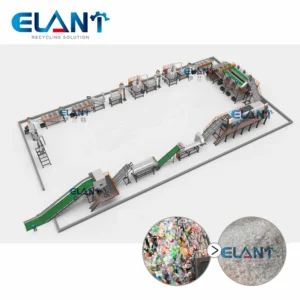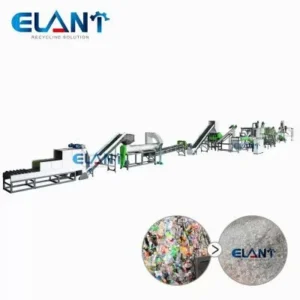Plastic extrusion is a cornerstone technology in the polymer processing industry, enabling the transformation of raw plastic materials into a wide range of finished and semi-finished products. Among the many extrusion processes, plastic recycling extrusion and film blowing extrusion stand out as two essential techniques that serve very different, yet equally important, purposes. This article delves into these two plastic extrusion processes, exploring their working principles, machinery, applications, and benefits in today’s environmentally and economically conscious world.
Introduction to Plastic Extrusion
Plastic extrusion is a continuous process used to manufacture items with a fixed cross-sectional profile. In this process, raw plastic material, typically in the form of pellets or flakes, is melted and forced through a die to create a specific shape. The extruded product is then cooled and cut or rolled depending on its final use.
While there are many forms of extrusion, two of the most commonly used are:
Recycling extrusion, which involves reprocessing used plastics into usable raw materials.
Film blowing extrusion, used to produce thin plastic films commonly found in packaging.
Each serves a distinct role in the plastic production and recycling ecosystem.

Plastic Recycling Extrusion: Turning Waste into Resources
The Purpose of Recycling Extrusion
Plastic recycling extrusion is the process of reclaiming used plastic materials and converting them back into reusable plastic pellets or granules. This method is crucial in reducing plastic waste, lowering environmental impact, and supporting the circular economy.
Key Stages in the Recycling Extrusion Process
The recycling extrusion process typically involves several steps:
Sorting and Cleaning
Before extrusion, used plastic is sorted by type (PET, HDPE, LDPE, PP, etc.) and thoroughly cleaned to remove contaminants such as food residues, labels, and dirt.
Shredding or Crushing
The cleaned plastic is shredded into flakes or small pieces, making it easier to melt and process in the extruder.
Feeding into the Extruder
The shredded plastic is fed into an extruder, where it is heated to its melting point.
Melting and Homogenization
Inside the extruder, rotating screws mix and melt the plastic uniformly. Additional filtration may occur at this stage to remove remaining impurities.
Extrusion through a Die
The molten plastic is forced through a die to form continuous strands.
Cooling and Pelletizing
The extruded strands are cooled using air or water, then cut into pellets using a pelletizer. These recycled pellets can be reused in various manufacturing applications.
Equipment Used in Recycling Extrusion
Single-screw or twin-screw extruders
Shredders and crushers
Washing and drying systems
Melt filters and degassing systems
Pelletizing systems (strand or underwater type)
Applications of Recycled Plastic Pellets
Recycled plastic pellets produced through extrusion can be used in:
Plastic packaging
Injection molded products
Pipe and sheet production
Automotive components
Construction materials
Film Blowing Extrusion: Creating Flexible Packaging Materials
What Is Film Blowing Extrusion?
Film blowing extrusion is a specialized process used to manufacture thin plastic films by extruding a molten polymer through a circular die, then expanding it into a bubble with air pressure. The bubble is cooled and flattened into film rolls. This method is widely used in the packaging industry.
Step-by-Step Film Blowing Process
Melting the Plastic
Similar to recycling extrusion, polymer granules are melted inside a single-screw extruder.
Extruding Through a Circular Die
The molten plastic is pushed through a circular die to form a tube of hot, molten plastic.
Blowing the Film Bubble
Compressed air is injected into the center of the tube to form a bubble, which expands the tube to the desired diameter and film thickness.
Cooling
The bubble is cooled by air rings or chill rolls to stabilize its shape.
Flattening and Winding
The bubble is collapsed by rollers into flat film layers and wound onto rolls.
Key Equipment in Film Blowing Extrusion
Single-screw extruder
Air rings for cooling
Circular die head
Bubble stabilizer
Take-up rollers and winders
Automatic thickness control systems
Film Blowing Material Choices
Common plastic resins used for film blowing include:
Low-Density Polyethylene (LDPE)
Linear Low-Density Polyethylene (LLDPE)
High-Density Polyethylene (HDPE)
Polypropylene (PP)
Each type of resin offers different properties like transparency, tensile strength, barrier properties, and flexibility.
Applications of Blown Films
Grocery and garbage bags
Food packaging films
Agricultural mulch films
Shrink films and stretch films
Industrial liners and bags

Comparing the Two Processes: Recycling vs. Film Blowing
| Aspect | Recycling Extrusion | Film Blowing Extrusion |
|---|---|---|
| Purpose | Reprocessing waste plastics into pellets | Producing thin, flexible plastic films |
| Input Material | Post-consumer or industrial plastic waste | Virgin or recycled plastic pellets |
| Output Product | Plastic pellets/granules | Plastic film rolls |
| Environmental Impact | Reduces landfill waste and promotes reuse | May use recycled content but primarily creates new film |
| End Applications | Raw material for manufacturing | Packaging, bags, wraps, and liners |
Both processes are vital in the plastic manufacturing ecosystem—recycling extrusion supports sustainability, while film blowing addresses the growing demand for flexible packaging.
Technological Advances and Industry Trends
Recycling Extrusion Innovations
Automated Sorting and AI-based Material Identification
Vacuum degassing systems for cleaner melt
Advanced filtration technology to remove micro-contaminants
Integrated extrusion-washing systems for higher efficiency
Film Blowing Innovations
Multi-layer co-extrusion to produce films with specific barrier properties
Thickness and width control automation
Use of biodegradable or compostable resins
Integration of recycled content into high-performance films
These innovations are driving the industry toward more sustainable, energy-efficient, and performance-oriented extrusion processes.
Environmental Significance of Both Processes
Plastic pollution is a growing global issue, and both recycling extrusion and film blowing extrusion play important roles in mitigating its impact.
Recycling extrusion directly contributes to waste reduction and circular economy practices by giving new life to discarded plastic.
Film blowing can incorporate recycled materials and is increasingly evolving toward sustainable packaging with thinner, stronger films and biodegradable options.
As environmental regulations tighten, manufacturers are increasingly adopting these technologies to remain compliant and responsible.
Conclusion
While plastic recycling extrusion and film blowing extrusion may differ in process and end product, they are fundamentally interconnected in the broader plastic lifecycle. Recycling extrusion recovers materials from post-consumer waste, feeding them back into the system, while film blowing transforms these materials into usable packaging and product solutions.
By understanding and leveraging both processes, industries can not only achieve higher efficiency and product quality but also contribute meaningfully to the global push for sustainability. Whether you are a manufacturer, supplier, or end user, recognizing the importance of these extrusion technologies is key to embracing a more circular and eco-conscious future in plastics.
